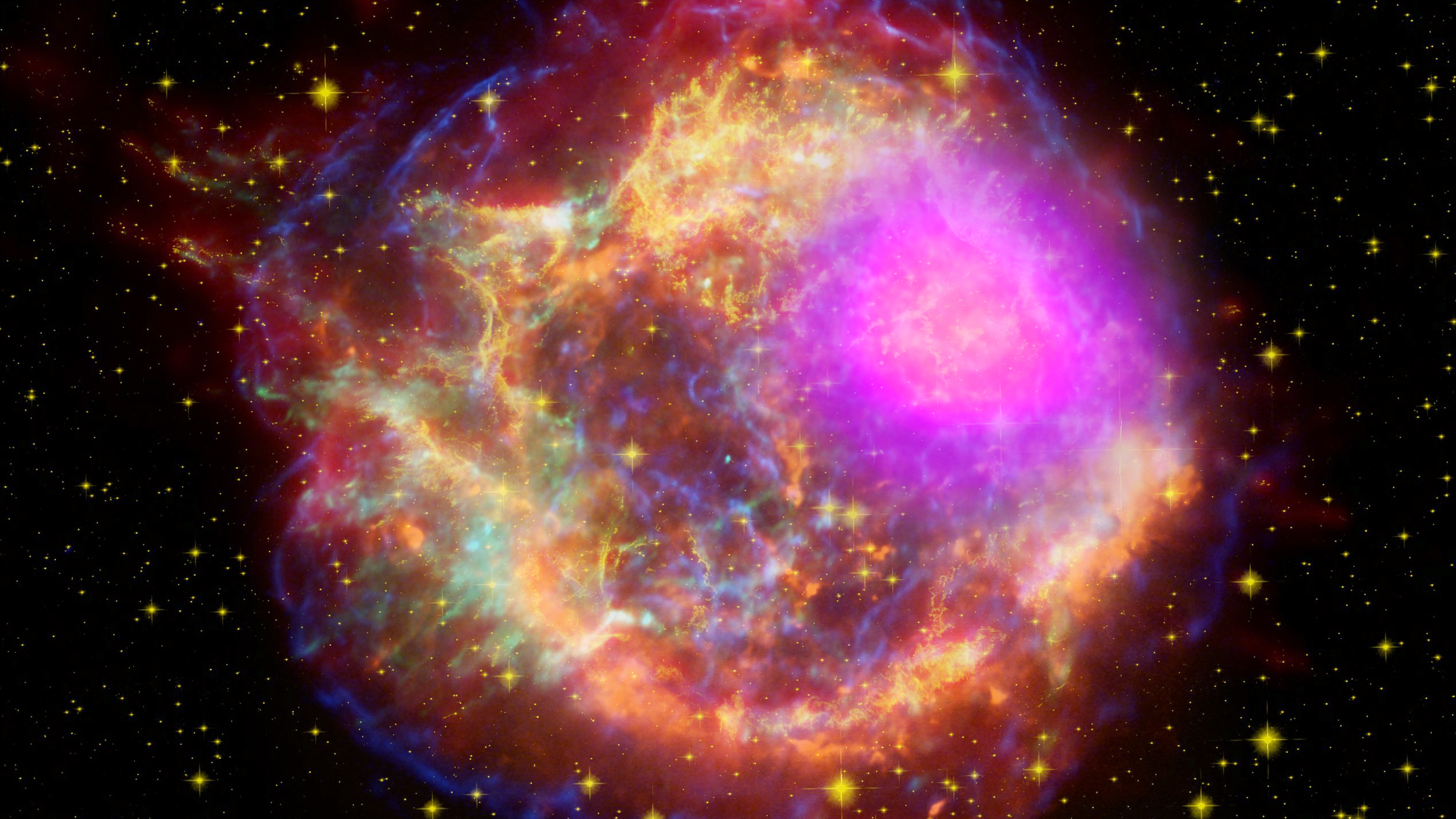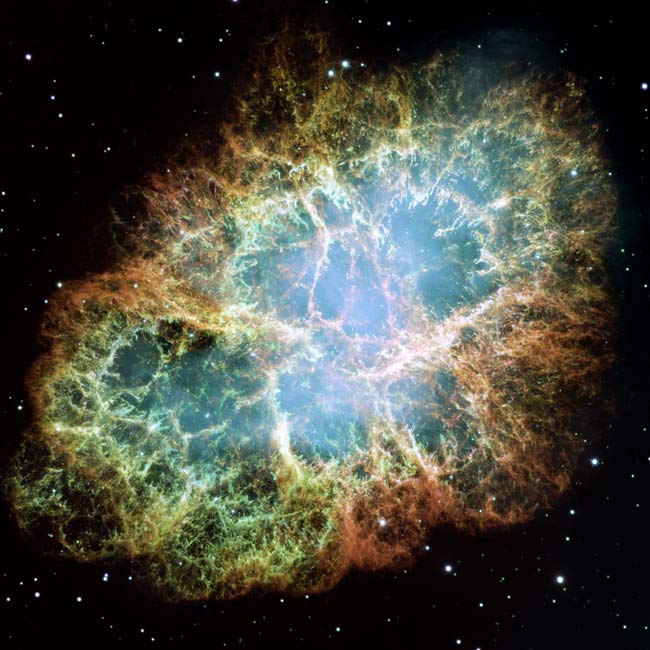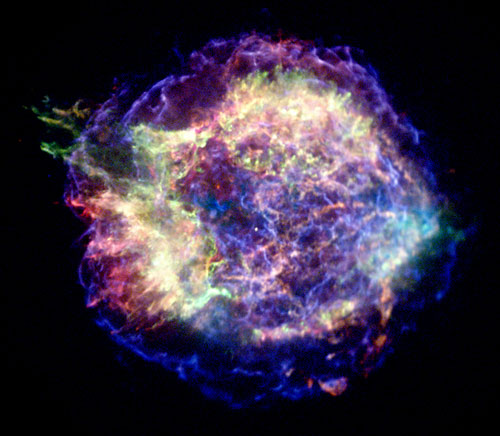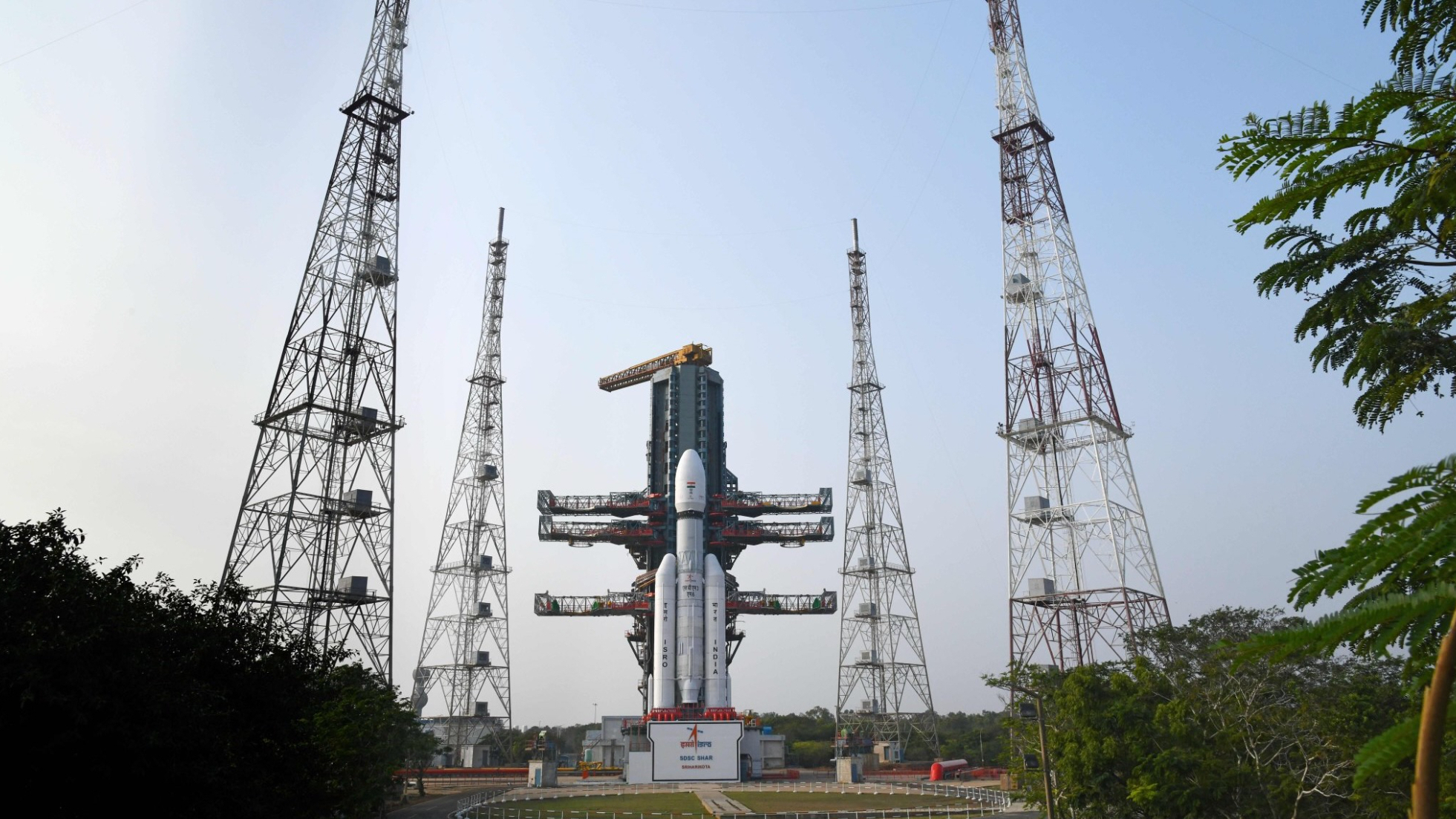What is a supernova?
Supernovas are the most brilliant of explosions.

A supernova is what happens when a star has reached the end of its life and explodes in a brilliant burst of light.
Supernovas can briefly outshine entire galaxies and radiate more energy than our sun will in its entire lifetime. They're also the primary source of heavy elements in the universe. According to NASA, supernovas are "the largest explosion that takes place in space."
A new supernova called SN 2023ixf has been making headlines since it first burst into view on May 19, 2023, when supernova hunter Koichi Itagaki from Yamagata, Japan spotted a new bright spot in the Pinwheel Galaxy. The supernova was confirmed the following day by the Zwicky Transient Facility (ZTF) in California.
Related: How to see the new supernova in the Pinwheel Galaxy
Various civilizations recorded supernovas long before the telescope was invented in the 17th century. The oldest recorded supernova is RCW 86, which Chinese astronomers spotted in A.D. 185. Their records show that this "guest star" stayed in the sky for eight months, according to NASA.
The Crab Nebula, arguably the most famous supernova, was first spotted by Chinese and Korean astronomers who recorded this star explosion in their records in 1054. Native Americans may have seen it as well, according to rock paintings found in Arizona and New Mexico. The supernova that formed the Crab Nebula was so bright that those early astronomers could see it during the day.
Other supernovas that were observed before the telescope was invented occurred in the years 393, 1006, 1181, 1572 (studied by famed astronomer Tycho Brahe) and 1604. Brahe wrote about his observations of the "new star" in his book, "De nova stella," which gave rise to the name "nova."
Breaking space news, the latest updates on rocket launches, skywatching events and more!
The term "supernova" was first used by Walter Baade and Fritz Zwicky at Mount Wilson Observatory, who used it in relation to an explosive event they observed, called S Andromedae (also known as SN 1885A), located in the Andromeda Galaxy. The scientists suggested that supernovas happen when ordinary stars collapse into neutron stars.
Related: When will the sun die?
Supernova FAQs answered by an expert
We asked Huei Sears, a physics graduate student at Northwestern University, a few frequently asked questions about supernovas.

Huei Sears is a sixth-year Physics PhD candidate at Northwestern University. Her research is on the host galaxies of long gamma-ray bursts (GRBs) from 12.5 billion years ago. Long GRBs are thought to come from the deaths of the most massive stars, and so she is trying to describe their host galaxies to see what GRBs might tell us about massive stars.
What is a supernova?
A supernova is the explosion of a massive star. There are many different types of supernovae, but they can be broadly separated into two main types: thermonuclear runaway or core-collapse. This first type happens in binary star systems where at least one star is a white dwarf, and they're typically called Type Ia SNe. The second type happens when stars with masses greater than 8 times the mass of our sun collapse in on themselves and explode. There are many different subtypes of each of these SNe, each classified by the elements seen in their spectra.
What happens after a supernova?
After a supernova, a few different things can happen. Sometimes the exploded star will partially collapse into a black hole or a neutron star, and the rest of the mass will get converted into energy or will be blown away from the force of the explosion. This blown-away material is sometimes called a "supernova remnant," which is a type of nebula.
Sometimes if the exploded star was very massive, during the supernova, a long gamma-ray burst can also happen! Some of the shed material will get spun up around the resultant black hole or a neutron star and then get sent out through a jet at speeds close to the speed of light. Because the material is moving so fast, it can emit photons at very high gamma-ray energies — this is the gamma-ray burst!
What marks the beginning of a supernova?
In a Type Ia supernova, the supernova process happens when the white dwarf in the binary accretes too much mass (anything over about 1.44 times the mass of our sun). The exact cause of the explosion is still an active area of research, but many think that the extra mass makes the core of the white dwarf heat up, which leads to too much pressure and energy inside the star that it is no longer able to support, and the star violently explodes.
In the core-collapse supernova type, the beginning of the supernova is marked by when the core of the star starts fusing silicon into iron. Usually, when elements are fused into heavier elements, energy is released, and this energy is what keeps the star from falling in on itself. Iron, however, is a special element in that it needs to take in energy to be fused into something else. Once the star starts making iron, the iron starts taking in energy and the star begins to fall in on itself. The star quickly (~1s) collapses and once the core hits a critical density gravity is overpowered by the nuclear force which becomes repulsive, and the matter is violently expelled outward.
When stars die
On average, a supernova will occur once every 50 years in a galaxy the size of the Milky Way, according to research by the European Space Agency. This means a star explodes every 10 seconds or so somewhere in the universe, according to the U.S. Department of Energy.
About 10 million years ago, a cluster of supernovas created the "Local Bubble," a 300-light-year-long, peanut-shaped bubble of gas in the interstellar medium that surrounds our solar system.
Related: Giant, galactic bubble is driving star formation
Exactly how a star dies depends in part on its mass. Our sun, for example, doesn't have enough mass to explode as a supernova. (Though the news for Earth still isn't good, because once the sun runs out of its nuclear fuel, perhaps in a couple billion years, it will swell into a red giant that will likely vaporize our world, before gradually cooling into a white dwarf.) But with the right amount of mass, a star can burn out in a fiery explosion.
Types of supernovas
A star can go supernova in one of two ways:
Type I supernova: A star accumulates matter from a nearby neighbor until a runaway nuclear reaction ignites.
Type II supernova: A star runs out of nuclear fuel and collapses under its own gravity.
Type II supernovas
Let's look at the more exciting Type II first. For a star to explode as a Type II supernova, it must be several times more massive than the sun (estimates run from eight to 15 solar masses). Like the sun, it will eventually run out of hydrogen and then helium fuel at its core. However, it will have enough mass and pressure to fuse carbon.
Next, gradually heavier elements build up at the center, and the star forms onion-like layers of material, with elements becoming lighter toward the outside of the star. Once the star's core surpasses a certain mass (called the Chandrasekhar limit), it begins to implode. For this reason, these Type-II supernovae are also known as core-collapse supernovae.
Related: Star-smash supernova? New type of stellar explosion possibly seen
Eventually, the implosion bounces back off the core, expelling the stellar material into space, forming the supernova. What's left is an ultra-dense object called a neutron star, a city-sized object that packs the mass of the sun in a small space.
Type II supernova sub-categories are classified based on their light curves, which describe how the intensity of the light changes over time. The light of Type II-L supernovas declines steadily after the explosion, while the light of Type II-P supernovas stays steady for a longer period before diminishing. Both types have the signature of hydrogen in their spectra.
Stars much more massive than the sun (around 20 to 30 solar masses) might not explode as a supernova, astronomers think. Instead, they collapse to form black holes.
Type I supernovas
Type I supernovas lack a hydrogen signature in their light spectra and are generally thought to originate from white dwarf stars in a close binary star system. As the gas of the companion star accumulates onto the white dwarf, the white dwarf is progressively compressed, and eventually sets off a runaway nuclear reaction inside that eventually leads to a cataclysmic supernova outburst.
Astronomers use Type Ia supernovas as "standard candles" to measure cosmic distances because all are thought to blaze with equal brightness at their peaks.
Type Ib and Ic supernovas also undergo core collapse just as Type II supernovas do, but they have lost most of their outer hydrogen layer. In 2014, scientists detected the faint, hard-to-locate companion star to a Type Ib supernova. The search consumed two decades, as the companion star shone much fainter than the bright supernova.
Related: 20-year-old supernova mystery finally solved
Watching a supernova
Recent studies have found that supernovas vibrate like giant speakers and emit an audible hum before exploding.
In 2008, scientists caught a supernova in the act of exploding for the first time. While peering at her computer screen, astronomer Alicia Soderberg expected to see the small glowing smudge of a month-old supernova. But what she and her colleague saw instead was a strange, extremely bright, five-minute burst of X-rays.
With that observation, they became the first astronomers to catch a star in the act of exploding. The new supernova was named SN 2008D. Further study has shown that the supernova had some unusual properties.
"Our observations and modeling show this to be a rather unusual event, to be better understood in terms of an object lying at the boundary between normal supernovae and gamma-ray bursts," Paolo Mazzali, an Italian astrophysicist at the Padova Observatory and Max-Planck Institute for Astrophysics, told Space.com in a 2008 interview.
More recently, astronomers have been getting excited about a newly discovered supernova in the Pinwheel Galaxy. Designated SN 2023ixf and located some 21 million light-years from Earth the new supernova is attracting the attention of both professional and amateur astronomers worldwide who are turning their telescopes and cameras toward the spot to observe this somewhat rare phenomenon.
Additional resources
For more on supernovas and their discovery, check out "The Supernova Story" (Princeton University Press, 1994) by Laurence Marschall. You may also want to consider reading A.G.W. Cameron's "Stellar Evolution, Nuclear Astrophysics, and Nucleogenesis" (Dover Publications, 2013). And for an accessible book about the entire life cycle of a star, check out "The Life and Death of Stars" (Cambridge University Press, 2013) by Kenneth Lang.
Bibliography
- NASA, 2013. "What Is a Supernova?" https://www.nasa.gov/audience/forstudents/5-8/features/nasa-knows/what-is-a-supernova.html
- Diehl, R., Halloin, H., Kretschmer, K. et al. Radioactive 26Al from massive stars in the Galaxy. Nature 439, 45–47 (2006). https://doi.org/10.1038/nature04364
- U.S. Department of Energy Office of Science. "DOE Explains…Supernovae." https://www.energy.gov/science/doe-explainssupernovae

Andrea Thompson is an associate editor at Scientific American, where she covers sustainability, energy and the environment. Prior to that, she was a senior writer covering climate science at Climate Central and a reporter and editor at Live Science, where she primarily covered Earth science and the environment. She holds a graduate degree in science health and environmental reporting from New York University, as well as a bachelor of science and and masters of science in atmospheric chemistry from the Georgia Institute of Technology.
- Kimberly HickokContributing Writer


